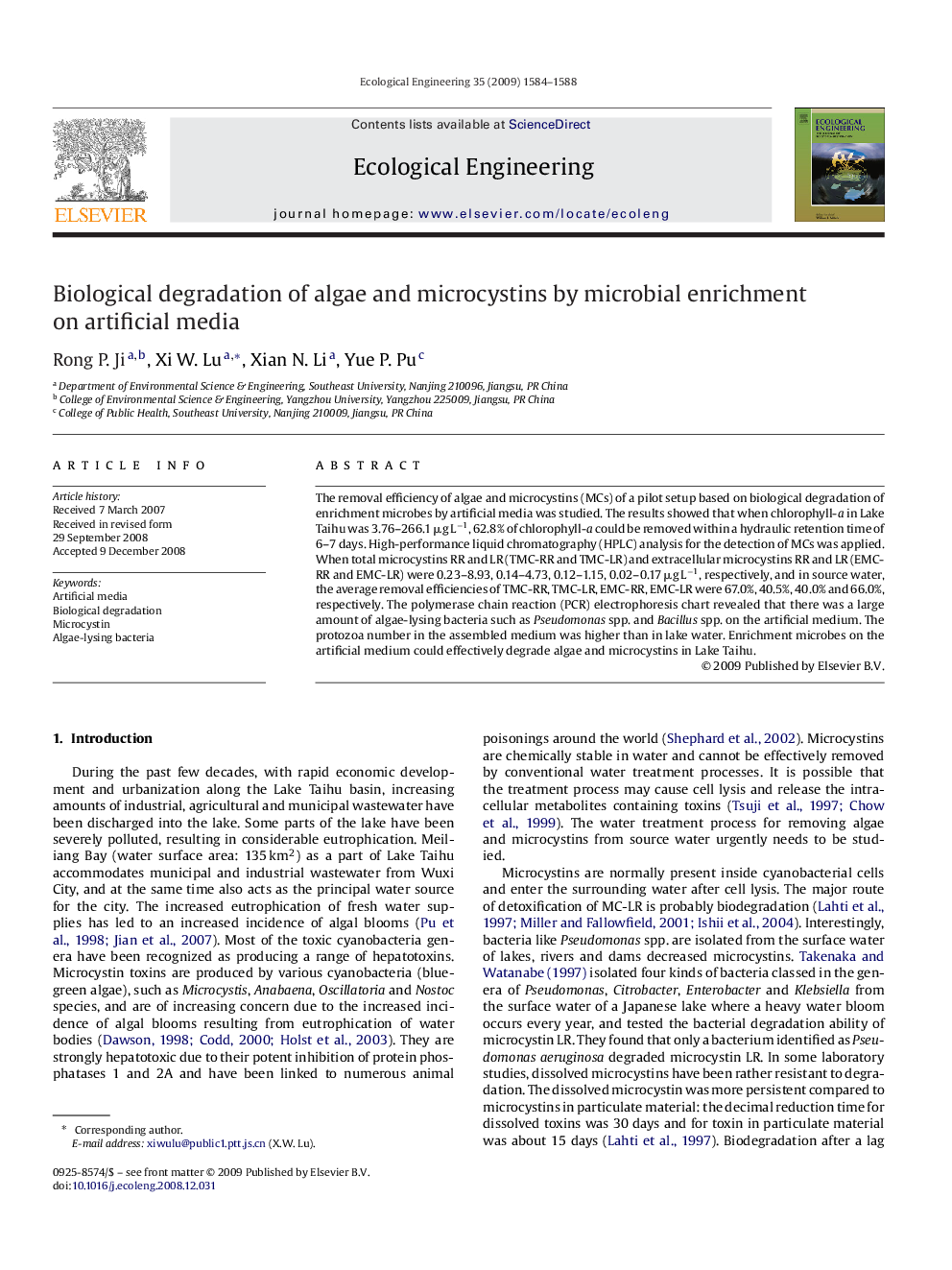| Article ID | Journal | Published Year | Pages | File Type |
|---|---|---|---|---|
| 4390501 | Ecological Engineering | 2009 | 5 Pages |
The removal efficiency of algae and microcystins (MCs) of a pilot setup based on biological degradation of enrichment microbes by artificial media was studied. The results showed that when chlorophyll-a in Lake Taihu was 3.76–266.1 μg L−1, 62.8% of chlorophyll-a could be removed within a hydraulic retention time of 6–7 days. High-performance liquid chromatography (HPLC) analysis for the detection of MCs was applied. When total microcystins RR and LR (TMC-RR and TMC-LR) and extracellular microcystins RR and LR (EMC-RR and EMC-LR) were 0.23–8.93, 0.14–4.73, 0.12–1.15, 0.02–0.17 μg L−1, respectively, and in source water, the average removal efficiencies of TMC-RR, TMC-LR, EMC-RR, EMC-LR were 67.0%, 40.5%, 40.0% and 66.0%, respectively. The polymerase chain reaction (PCR) electrophoresis chart revealed that there was a large amount of algae-lysing bacteria such as Pseudomonas spp. and Bacillus spp. on the artificial medium. The protozoa number in the assembled medium was higher than in lake water. Enrichment microbes on the artificial medium could effectively degrade algae and microcystins in Lake Taihu.
